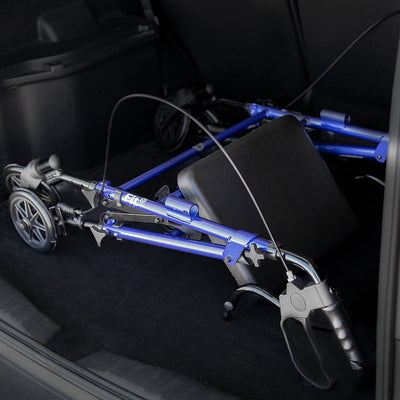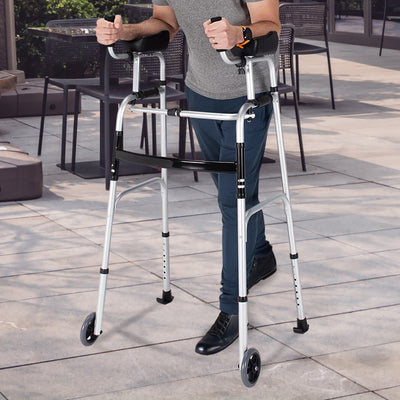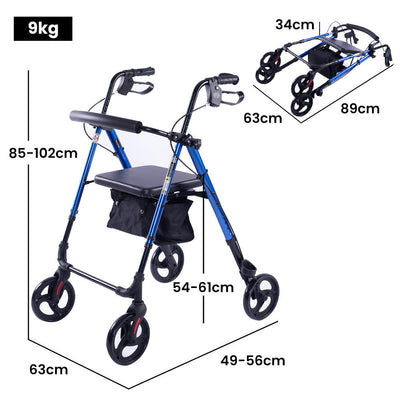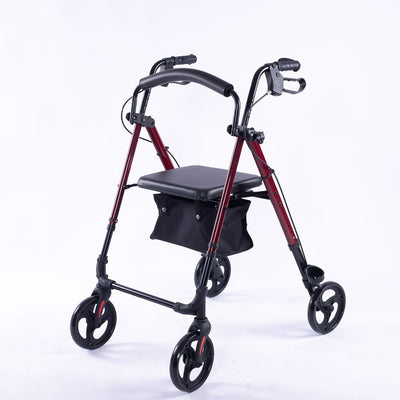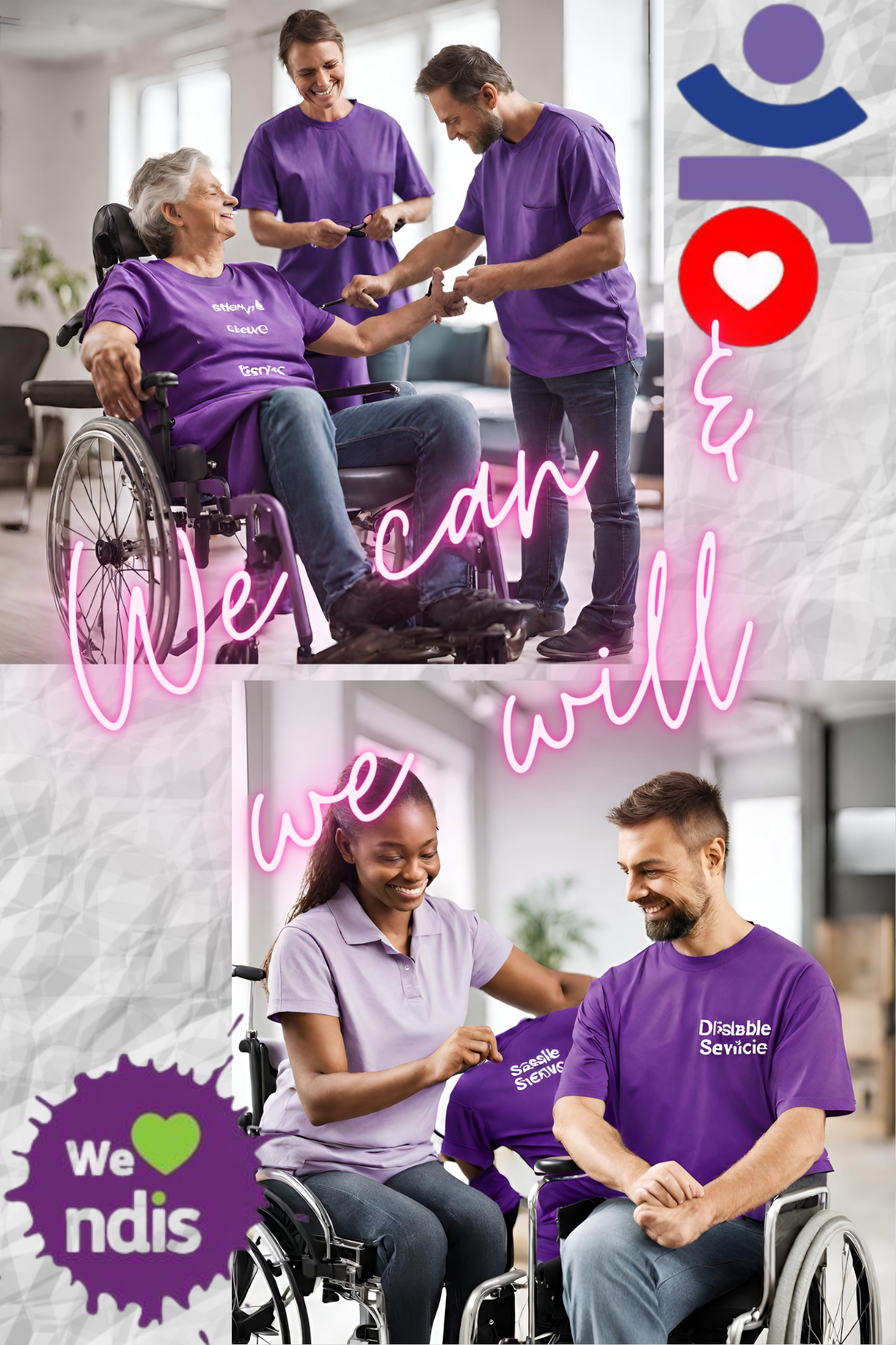As our loved ones age, ensuring their comfort and safety becomes a top priority. With the right assistive devices, the elderly can maintain their independence and enjoy a better quality of life. In this article, we’ll explore eight essential mobility devices for elderly individuals that can significantly improve their day-to-day living.
Mobility Devices for ElderlyMobility is often one of the first aspects of life that becomes challenging as we age. Various mobility devices for the elderly are designed to assist with walking, standing, and moving around safely.
1.1. Walkers
Walkers provide stability and support for those who struggle with balance. They come in various types, such as basic walkers and rollators, with some even featuring seats for resting.
1.2. Canes
A cane is a simple yet effective tool for elderly individuals who need just a bit of extra support while walking. Adjustable canes with ergonomic grips are particularly beneficial.
1.3. Wheelchairs
For those with more significant mobility challenges, wheelchairs offer the freedom to move around both indoors and outdoors. Electric wheelchairs provide additional convenience by reducing the physical effort required.
Chair with Wheels for Elderly
A chair with wheels for the elderly is a versatile piece of furniture that can be used in various settings. Whether it’s for dining, reading, or simply relaxing, these chairs make it easier for seniors to move around their homes without assistance.
2.1. Features of a Good Chair with Wheels
When choosing a chair with wheels for the elderly, look for features such as a sturdy frame, comfortable cushioning, and lockable wheels for safety.
2.2. Benefits of Using a Chair with Wheels
Chairs with wheels allow elderly individuals to maintain their independence while reducing the risk of falls. They are particularly useful for those who may have difficulty getting up from a seated position.
3. Grab Bars and Handrails
Grab bars and handrails are essential in areas like bathrooms and stairways. They provide additional support for elderly individuals when standing up, sitting down, or navigating tricky areas.
3.1. Installation Tips
Proper installation is crucial for grab bars and handrails. Ensure they are securely fastened to the wall and placed at an appropriate height for the user.
4. Stairlifts
Stairlifts are a lifesaver for elderly individuals who have difficulty climbing stairs. They consist of a motorized chair that moves along a rail, allowing users to safely travel up and down stairs with ease.
4.1. Types of Stairlifts
There are straight and curved stairlifts, designed to fit different types of staircases. Some models also feature battery backups to ensure operation during power outages.
5. Lift Chairs
Lift chairs are recliners with a motorized mechanism that helps users stand up or sit down with minimal effort. They are especially useful for those with arthritis or other conditions that make movement painful.
5.1. Choosing the Right Lift Chair
When selecting a lift chair, consider factors such as size, fabric, and the range of reclining positions. Some models also offer heat and massage features for added comfort.
6. Adjustable Beds
Adjustable beds allow elderly individuals to raise or lower different sections of the bed to find the most comfortable sleeping position. They are ideal for those with back pain, acid reflux, or other conditions that make sleeping in a flat position uncomfortable.
6.1. Health Benefits
Using an adjustable bed can improve circulation, reduce snoring, and alleviate pressure on joints, making it easier for the elderly to get a good night’s sleep.
7. Hearing Aids
Hearing loss is a common issue among the elderly, but hearing aids can significantly improve their quality of life by enhancing their ability to communicate and enjoy daily activities.
7.1. Types of Hearing Aids
There are various types of hearing aids, including behind-the-ear (BTE), in-the-ear (ITE), and completely-in-canal (CIC) models. The choice depends on the severity of hearing loss and personal preference.
8. Medical Alert Systems
Medical alert systems are crucial for elderly individuals who live alone or have medical conditions that require immediate attention. These systems allow users to call for help at the push of a button.
8.1. Features to Consider
When choosing a medical alert system, look for features like fall detection, GPS tracking, and a long-lasting battery. Some systems also offer two-way communication with emergency responders.
Conclusion
Investing in the right assistive devices can make a world of difference in the lives of elderly individuals. From mobility devices for elderly users to a chair with wheels for elderly comfort, these tools are essential for maintaining independence and improving quality of life. Whether you’re caring for an aging parent or planning for your own future, these eight devices are must-haves in any senior care plan.
FAQs
1. What are the best mobility devices for elderly individuals?
Walkers, canes, and wheelchairs are among the most popular and effective mobility devices for elderly individuals.
2. How can a chair with wheels benefit elderly individuals?
A chair with wheels provides mobility and reduces the risk of falls, allowing elderly individuals to move around their homes more easily.
3. Are stairlifts safe for elderly individuals?
Yes, stairlifts are designed with safety features like seatbelts and battery backups, making them safe for elderly individuals to use.
4. What should I consider when choosing a lift chair for the elderly?
Consider the size, fabric, range of reclining positions, and additional features like heat and massage when choosing a lift chair.
5. Where can I find high-quality assistive devices for the elderly?
You can find a wide range of assistive devices for the elderly at Aussie Care Hub Mobility.



